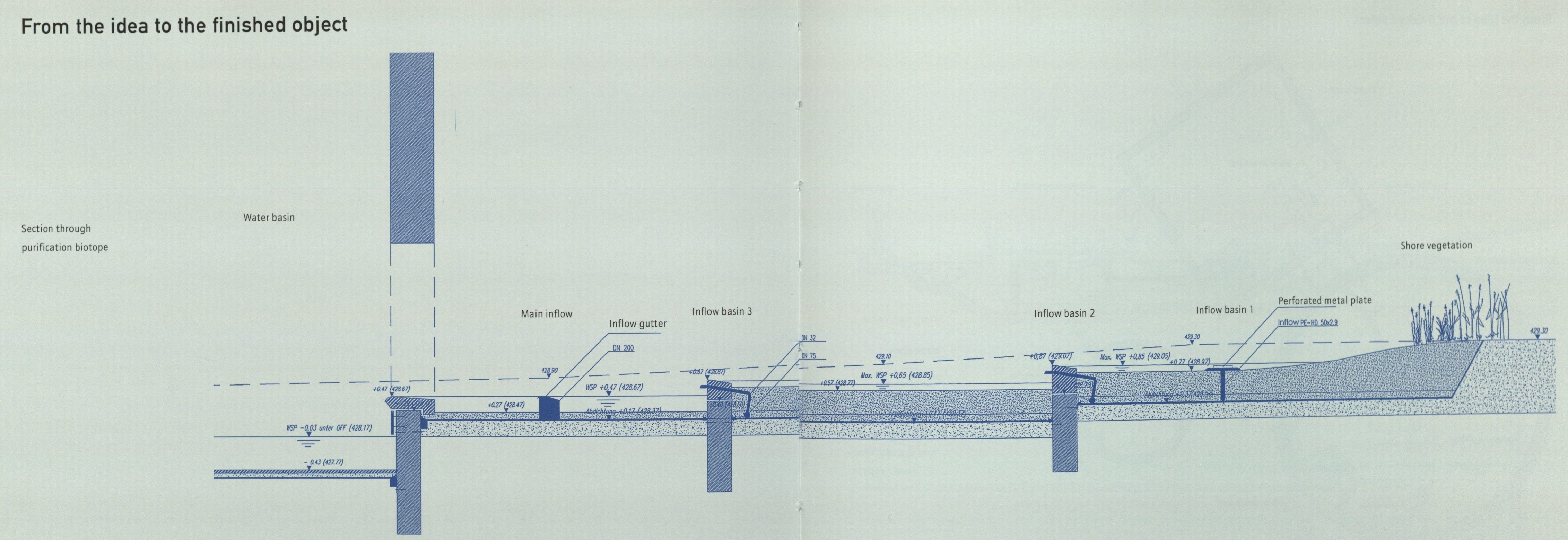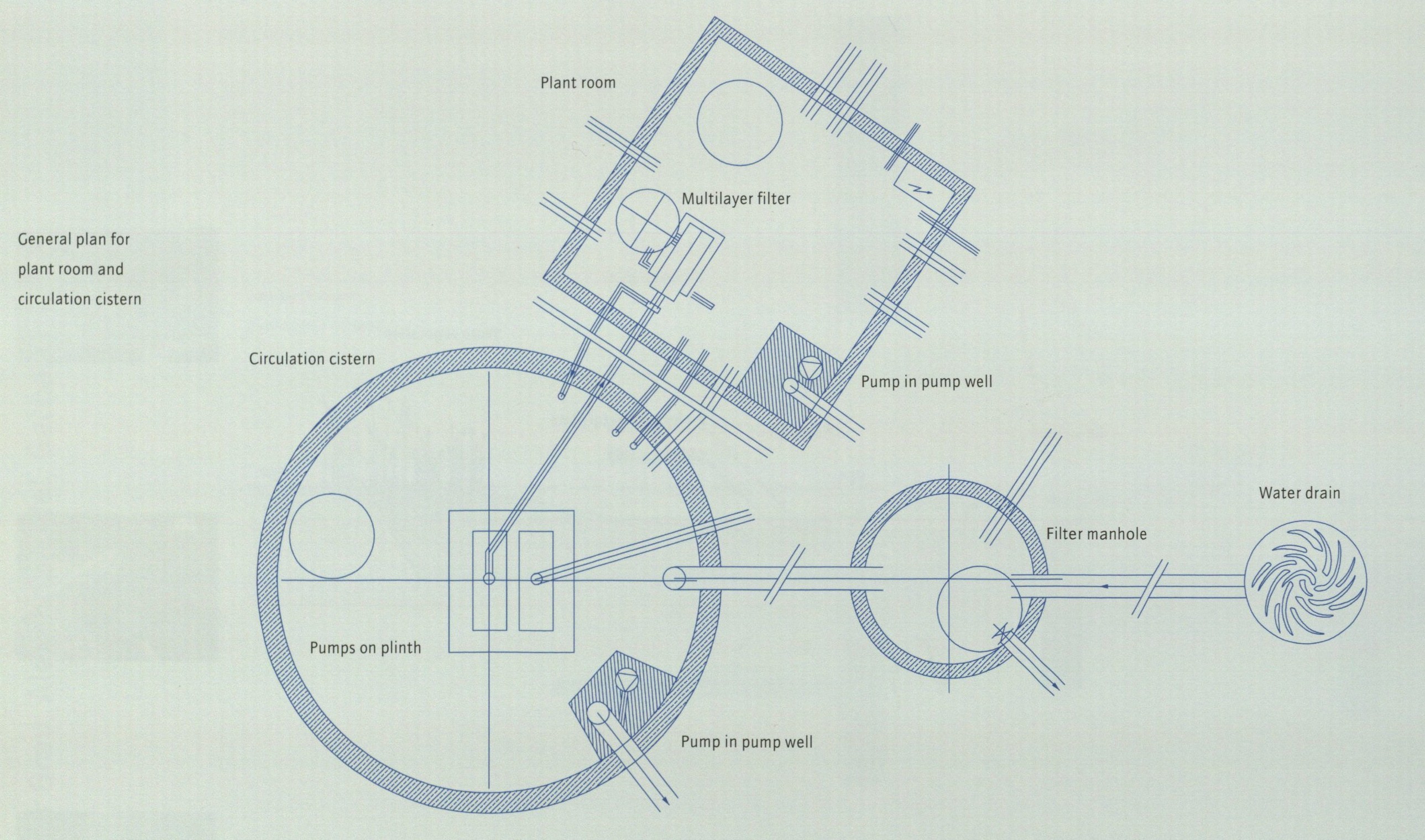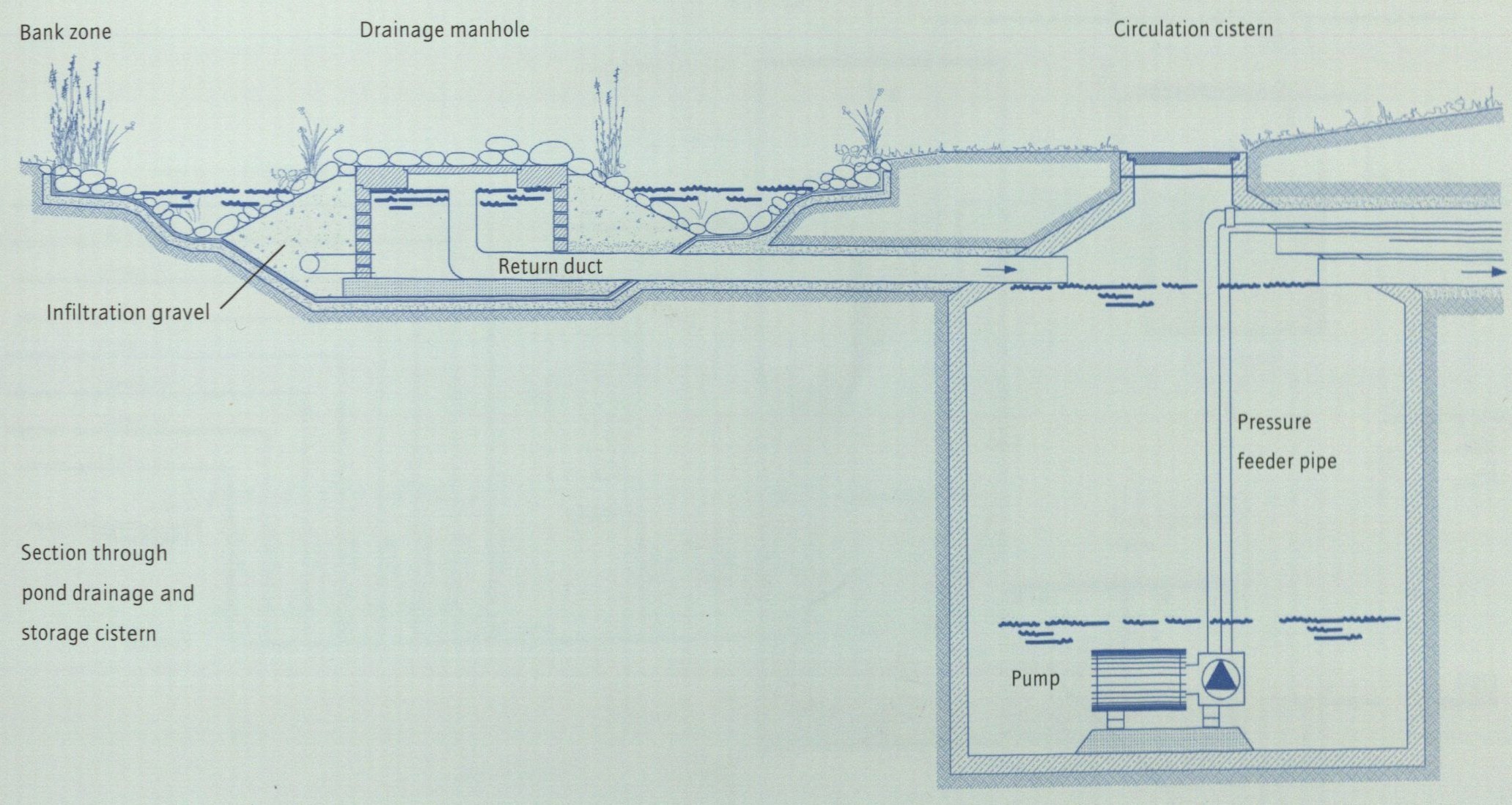Atelier Dreiseitl Engineering
Although Atelier Dreiseitl’s projects are designed to convey natural urban water processes and, in some cases, use those processes in the design of the system, the water features cannot run on their own; each system relies on complex engineering and technical systems to function. In order to purify, store, circulate, and re-use the water, functional elements, such as filters, reservoirs, pumps, and control devices, must exist behind the scenes.
Technical Elements
While the systems Atelier Dreiseitl designs are unique to each watercourse (the specifics of which are not advertised), each system employs common elements that enable the system to function.
Storage and Circulation Cisterns: Storage and circulation cisterns are required for all circulating water systems in order to hold water needed for the system’s use and to store water when the system is turned off. Water features that incorporate a pool or pond can be used as a reservoir without the use of an additional cistern. Overflow spaces and drainage outlets are needed for each storage reservoir or cistern.
Pumps: Unless a water feature is designed to run on a natural slope, water must be artificially circulated with pumps. Atelier Dreiseitl’s projects use either dry-installed or submerged modern rotary pumps. Submerged pumps can be installed directly in the reservoir or circulation cistern, whereas dry-installed pumps must be installed in their own control room.
Filters: Due to water-quality regulations for water systems, filtration systems are an essential component of all Atelier Dreiseitl waterscapes. The first level of filtration is where the water interfaces with people; garbage, food scraps, and cigarettes must be filtered out of the system before they reach the storage cisterns and pumps. In most cases, the first level of filtration is done with coarse pre-filters, such as skimmers and rakes. After the pre-filters remove most of the large pollutants introduced by humans, automatic filtration systems are employed to filter the water before it gets to the pumps. Atelier Dreiseitl often uses fast sand filters and micro-sieves at this stage of the system. Many of Atelier Dreiseitl’s projects also use purification biotopes.
Regulation and Monitoring: Regulation and monitoring devices are needed for all systems in order to regulate the amount of water circulating in the system and to monitor the pH value, temperature, oxygen content, and nutrient levels in the water. Monitoring the water in these ways ensures that the system is functioning and reduces the maintenance needs of the system in the long term.
Technical Specifications
Atelier Dreiseitl designs the configuration of its systems and determines the exact elements to be used on a case-by-case basis with special consideration to factors determined by the design vision and regulations.
Although the design of the watercourses determines the basic configuration of the functional system, the specifications of the system and its components are often determined by outside factors. Local regulations for water sourcing and water quality are often the largest outside influences on the design of the functional elements of the system.
The traditional water sourcing method for water features is the local drinking water supply. However, modern Atelier Dreiseitl projects try to use available surface run-off, storm water drainage, or roof-collected water, which introduces concerns about water quality. For most water features that come into contact with people, such as the interactive elements in many of Atelier Dreiseitl’s watercourses, regulations stipulate that the water must be at least bathing quality. Many countries and municipalities require the water, especially if the features suggest drinking, to be drinking-water quality.
Elements of the system, such as pumps, filters, and storage cisterns, are often determined by the exact specifications of the water-sourcing and water-quality regulations. As the demand for sustainable and ecologically sensible systems grows, these factors become more influential in the design processes as well.
Specific Systems
While I have not found written work by Atelier Dreiseitl designers and engineers on the specific designs of the functional systems, Atelier Dreiseitl’s recent book, New Waterscapes: planning, building, and designing with water, contains the following sketches of representational systems that could be adapted for use. The sketches provide examples of the complexity of the configurations.


